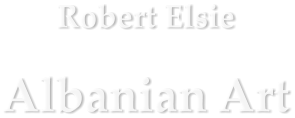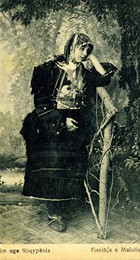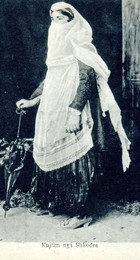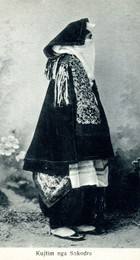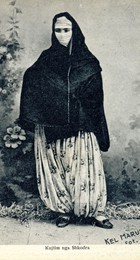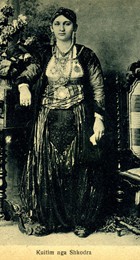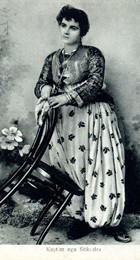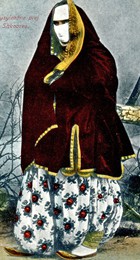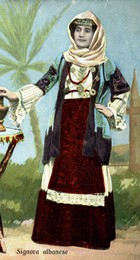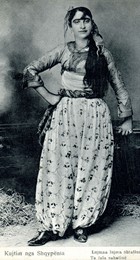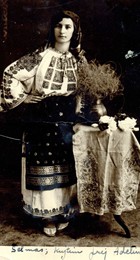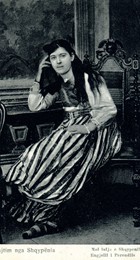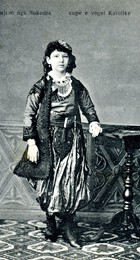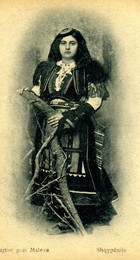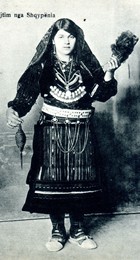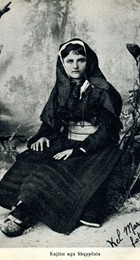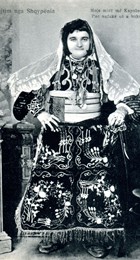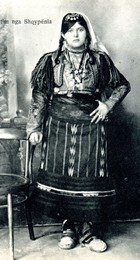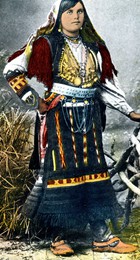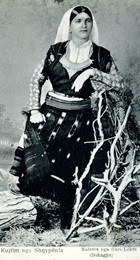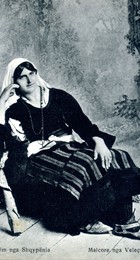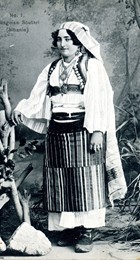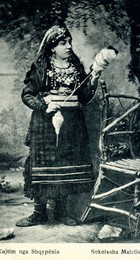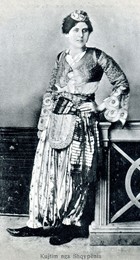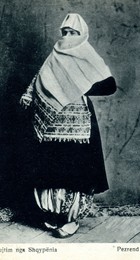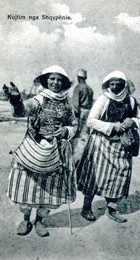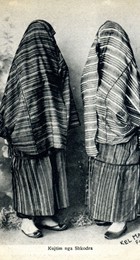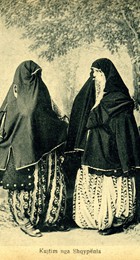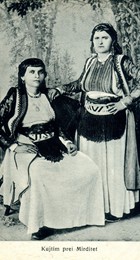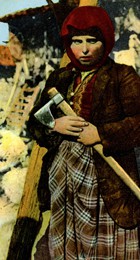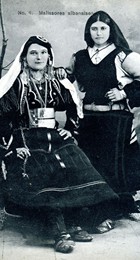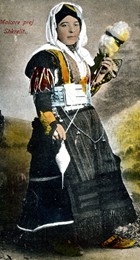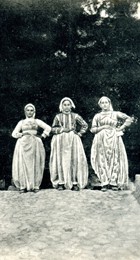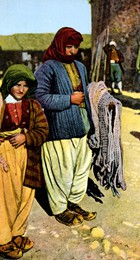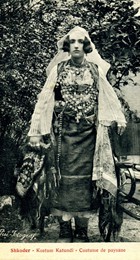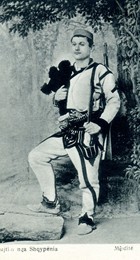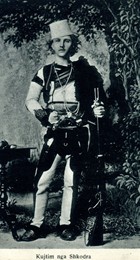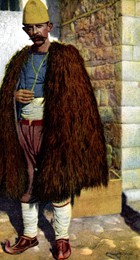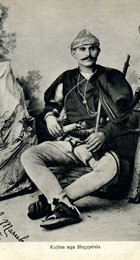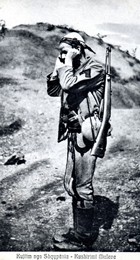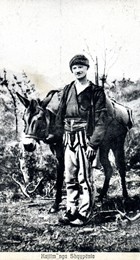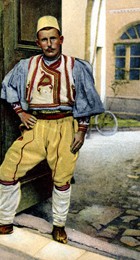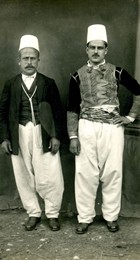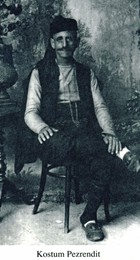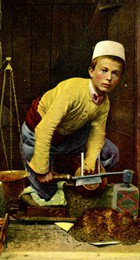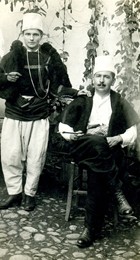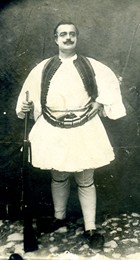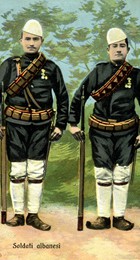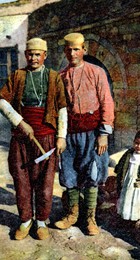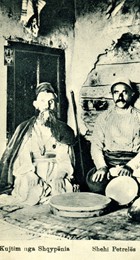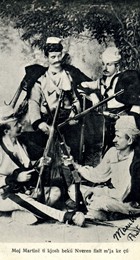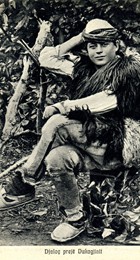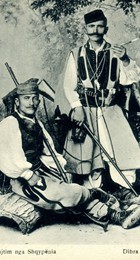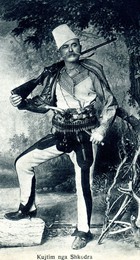
| Robert Elsie | AL Art | AL History | AL Language | AL Literature | AL Photography | Contact |

Albanian Costumes
in Early Postcards
Deutsch | Shqip The wealth and variety of Albanian folk costumes was first captured in photographs in the late nineteenth and early twentieth centuries. Albania’s traditional isolation from the rest of Europe gave rise to much originality in dress and early foreign travellers were quite captivated by what they saw. In the harsh northern mountains of the country, each tribe, indeed each valley and settlement, had its own distinctive dress that was easily recognizable by the whole population. Costumes revealed not only tribal and religious affiliation, but for women in many cases also marital status. These traditional costumes were in general use well into the 1930s, and in some regions of the country until after the Second World War. Even in the first decades of the twenty-first century, it is no rarity to see traditional costumes worn by Albanian women daily, or at least on market day, in particular in the northern regions of Shkodra, Malësia e Madhe, Lezha and Mirdita and in some more isolated parts of southern Albania, Kosovo, Montenegro and Macedonia. However, globalization is swiftly taking its toll. In the first three decades of the twentieth century, the photographs made of folk costumes were turned into postcards and put on sale, as in other countries. The present collection of these early postcards was kindly made available from the archives of the Centre for Albanian Studies in London. It should be noted that southern Albanian costumes are underrepresented in this collection, not because they are any less spectacular, but simply because the earliest photographers and the earliest costume postcards happened to be from the north of the country.
